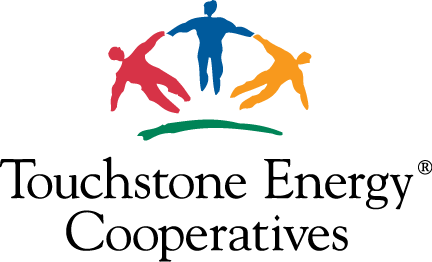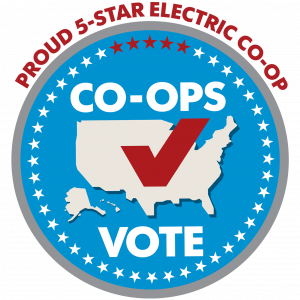By Dwight Miller
We were recently asked for input for RE Magazine's April 2024 the Co-op Forum for the April 2024 edition of RE Magazine. The question: How has risk assessment evolved in the last decade?
What a great question, and so fun to answer! The only problem was the word limit of 220-230 words. So, here was our input:
In managing risk in Ohio, we’re moving away from “managing safety programs” more to “managing processes safely,” where safety is woven into the fabric of everything the co-op does as a core value. And that includes replacing a compliance-based approach with a standard of care as our brother’s keeper (e.g., Speak Up, Listen Up), where relationships are a key focus. We’re now setting clearer expectations and “coaching” the crews in a positive environment. What “happens on the crew stays on the crew” has evolved into a common safe space where open communication allows workers with good intentions to share their shortcomings. How? By going from a culture of blame to a mindset that people are part of the solution. Even with all of that, risk management of serious injuries and fatalities (SIFs) may have evolved the most as it’s really helped us in Ohio to re-focus on the most important things. We now understand that miniscule DART rates and recordable rates can be setting someone up for catastrophic failure because the absence of injury doesn’t necessarily imply the presence of safety. Maybe we need to redefine a “high performing cooperative” since we now know it's a lot less about our DART Rate and a lot more about proactive capacities that produce open conversation. And this all starts with the understanding that humans make mistakes, culture drives behavior, and our response to failure matters.
In this first of three articles, we will reflect on each part of this response.
But before we begin, it’s important to establish a basic definition/understanding of safety: Identification of hazards, assessment of the risk involved, and then implementation of the proper controls. A proper risk assessment is key to managing the task with the controls needed to prevent injury or harm. So, the question essentially is, “How has your safety program evolved?”
HAVE YOU BEGUN MANAGING SAFELY OR ARE YOU STILL MANAGING SAFETY?
In managing risk in Ohio, we’re moving away from “managing safety programs” more to “managing processes safely,” where safety is woven into the fabric of everything the co-op does as a core value.
Do you notice tension between your engineering/operations and safety? If so, then that’s a good indicator that safety is still likely seen as a separate item to manage, where safety is the enemy to production and every other good thing. This is what we call “managing safety.” Did you know that the safest companies are also the most efficient? There are many roads we could go down to discover truth here, but let’s just look at the classic example of Paul O’Neill when he became the new CEO at Alcoa years ago. After this safety pioneer was named the new leader, when everyone was asking about capital ratios and inventory levels, he wasn’t having it. All he would talk about was becoming safer and it scared Alcoa’s investors. “This guy is absolutely nuts!” But O’Neill understood Alcoa’s problems and believed that the company just needed a deeper focus on process, and he understood that safety is the inroad to improving ALL processes in an organization. He knew it would be difficult for employees to embrace change but believed that everyone would be able to rally behind a safer place to work. You are likely aware of the amazing success story that followed. If not, please look it up.
How does that translate to the electric cooperative model? Whenever we have discussions about keeping the lights on, getting them back on when they go out, and keeping up with production schedules, the discussion should be about just that, and what it looks like to follow proper processes in every sense. That’s what we call managing outages safely. “Hey, we have to get these outages on…and oh, yeah, be sure to stay safe.” When safety is seen as this “separate thing” that we need to manage, it’s not only annoying and the reason why it’s taking so long to get the lights back on, but it’s often seen as the enemy of overall progress, many times with longer-tenured employees who have struggled adjusting to the newer concepts of safety.
When safety is just who we are and what we do and integrated into every portion of the co-op, it truly becomes the pathway to “best in class.” The safety coordinator now becomes a true coordinator who is simply helping different workers to understand what it looks like for them to manage their processes safely. He no longer is looked at as “safety” in the organization. About 80% of the lineworkers in the recent strategy lab at the local level identified every employee as having safety program responsibilities, not just those assigned safety responsibilities. What a great sign! Because it’s not just operations, but it’s also the staking technician, the CFO, and the member services representative who play a very important role in managing the co-op safely. Everyone must know their role so that they can manage their process SAFELY rather than bear this extra burden called “SAFETY” that impedes progress. An elite safety program is then seen as the inroad to becoming an elite organization and the foundation for everything the co-op does through process. That’s how safety moves from a “priority” to a core “value.” Priorities shift, but values define who we are.
Do we create production schedules safely? Do we staff our co-ops safely? Do we purchase tools and materials safely? Do we stake out a job safely that will set the crew up for success? If not, are we educating our staking technicians to understand how their actions can directly impact the crew’s safety? And do we replace a C6.21 pole safely? If so, this is a sign of progress.
And, just like Paul O’Neill, the courageous safety leadership in place at the senior level of Ohio’s Electric Cooperatives sets Ohio apart, and it’s just such an honor to work under such leadership that has shifted more into “managing processes safely.” But what might it look like if the word “safety” was no longer needed in job titles or programs? Where every manager, every crew leader, every trainer, and every supervisor owned safety in their particular job duties 100%? Let’s begin thinking what it might look like to begin shifting into a mindset where operations and safety no longer bump heads. And if that’s you already, thank you for leading the way!
COMPLIANCE OR CARE?
And that includes replacing a compliance-based approach with a standard of care as our brother’s keeper (e.g., Speak Up, Listen Up), where relationships are a key focus.
As my career is winding down, it’s no secret that pleasing the system is not on my “favorite things to do” list anymore. We talk about meeting minimum standards and maintaining records, and it’s easy to worry way too much about those things while leaving the most important things undone.
What motivates me is just everyone working hard together to keep our workers safe so that we never have to worry about those records. And if that’s scheduling a 60-minute meeting every week like some of our co-ops do, then that’s what we’re going to do, documented or undocumented…but we might as well sign that piece of paper since we’re all in here.
Compliance represents a minimum standard. There is someone I know that always just wants to know what the minimum standard is. That’s a good approach for getting someone hurt! Did you know that OSHA standards allow rubber gloving 19.9/34.5kV off of a pole? NESC at 15kV maximum (trying to get that changed). There’s your minimum standard…one of the most dangerous things you could ever do in our business – rubber glove primary off a pole. Yet, we would never consider allowing our employees to do such a thing. A “minimal” mindset worries about pleasing the system and getting by without extra measures that might be needed in case something goes wrong. What’s the minimum I can do and still be compliant?
Compliance checks the box and as long as we have lawyers, we will have boxes that we will need to check. Furthermore, we’ll even ask to see a few of those things in RESAP. Sorry! But that should never be our focus or our motivation. I personally am a “check the box” kind of person as I write out my list of things to do every day and I check them off as I go, which gives me satisfaction that I am making progress. But when we do that in our safety programs, it can become problematic.
So, we’re moving away from this compliance-based mindset to a standard of care as our “brother’s keeper.” What is the main difference? Our motivation. The reason we do safety. Our drive now becomes people rather than checking boxes, so we can adjust to things in real-time as they are happening on the job, like speaking up. That means relationships are now a major factor in getting our workers back home safely every day. And healthy relationships are also the foundation for other important things that we will discuss in this series. Speak Up, Listen Up is easy to talk about and hard to do. We can only do it if we practice it, so how exactly do we do that? By always continuing open and honest conversations at all levels. And that requires exceptional safety leadership setting the proper tone.
There was a study done for a difficult process that resulted in a serious mistake one in every 13 times it was performed. Investigation revealed one thing loud and clear: speaking up and listening up was absent in the accidents because everyone in the room felt uncomfortable saying anything. Accidents seemed to happen where someone simply failed to question the leader. In other words, it wasn’t the type of EMPLOYEES, but rather the type of LEADER.
Humility, fallibility, and accessibility are all required by the safety leader to create such an environment where a lower level team member feels comfortable questioning the leader. It is the LEADER’S responsibility to set the tone in an organization and on the crew where all team members feel comfortable saying unpopular things before catastrophe strikes. There have been many plane crashes where the first officer was afraid to speak up to the captain. That’s what they call a dysfunctional cockpit. Do you have a crew leader that creates a dysfunctional line crew?
So, this “standard of care” is based on relationships where people actually care for one another and have each other’s backs as their brother’s keeper; relationships between workers and management, workers and other workers, workers and members, and the list goes on. And co-op folks can do that better than everyone else. Biased? Yes, but still true!





